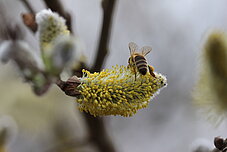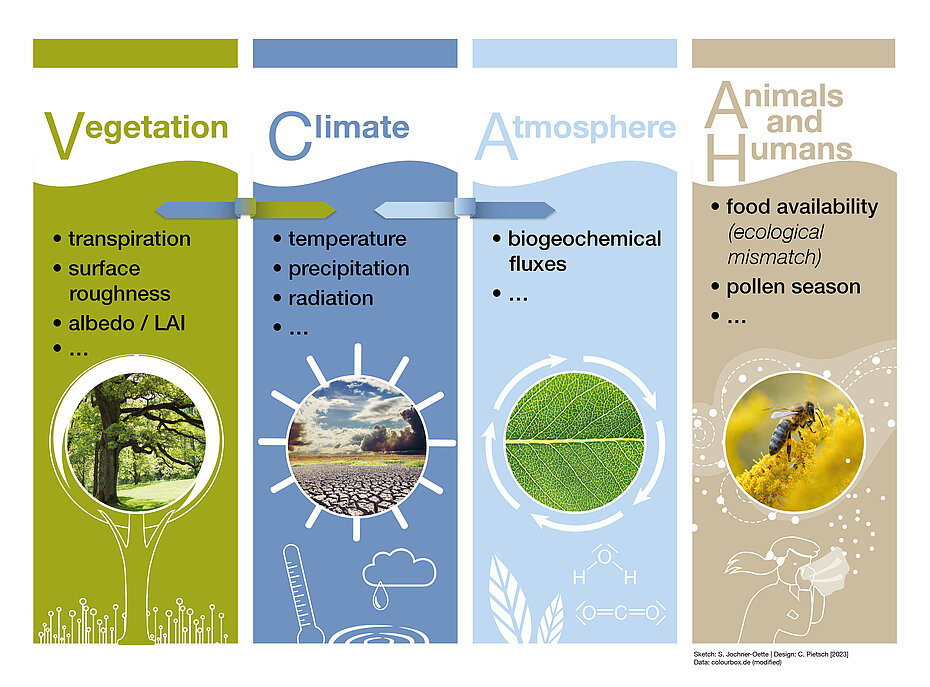Etymologically, the Greek word 'phenology' can be translated as 'the study of phenomena'. This includes "periodic growth and development phenomena of all plant and animal life in their temporal dependencies" (DWD 1991).
Humans have always been concerned with the seasonal development of plants. The knowledge of when edible fruits ripened was already indispensable for survival in early human history. The flowering of certain indicator plants serves as a reliable clock and heralds the beginning of seasons. Especially in agriculture, it is necessary to predict ideal sowing and harvesting dates to enable efficient work.
Since phenology enables small-scale as well as large-scale biomonitoring, its possible applications are manifold. In addition to forest climatology, agricultural meteorology, urban climatology or climate history, for example, this branch of research is also used in pollen forecasting / medical meteorology.
What are the effects of phenological changes?
Plant developmental phenomena are not only visually perceptible changes in nature, but their temporal occurrence also has a significant influence on plant ecological processes and characteristics, and thus on climatic effects. The presence of leaves allows plants to transpire (evaporate) through the stomata of the leaves, causing changes in air temperature and humidity. In addition, leaf development initiates the formation of chlorophyll, a pigment essential for photosynthesis in plants. Leafy trees change their reflectance (albedo) and leaf area index (LAI).
Because of its relevance to climate, information on phenology is therefore needed to drive specific climate models. The period between leaf unfolding and leaf fall marks the length of the growing season. During this period, surface roughness changes, which in turn affects wind speed. In addition, changes in LAI also redistribute precipitation across the stand. More generally, biogeochemical fluxes, in particular the hydrological cycle (latent heat flux) and the CO2 cycle (photosynthesis), are linked to the presence of leaves, so any changes will also have an impact on atmospheric chemistry.
For example, the phenological onset date of flowering is important for nectar-feeding insects. If, as a result of climate change, flowering is brought forward by more than the period of insect activity, an ecological mismatch will occur with corresponding negative consequences. Allergenic plants that bloom earlier or longer as a result of climate change also have implications for human health. Growth and maturity are also fundamental to agriculture and forestry, so changes due to climate change will have a strong impact here.






